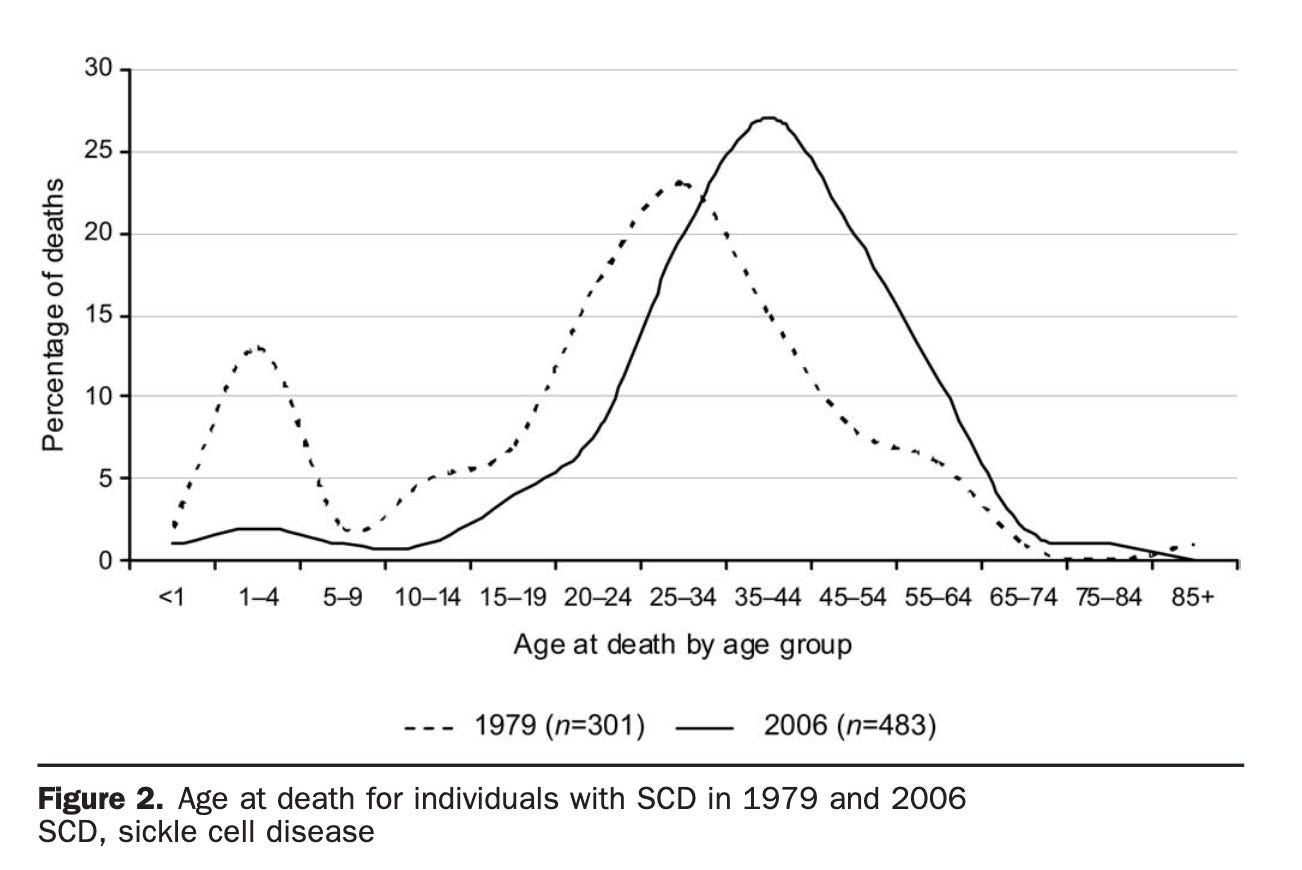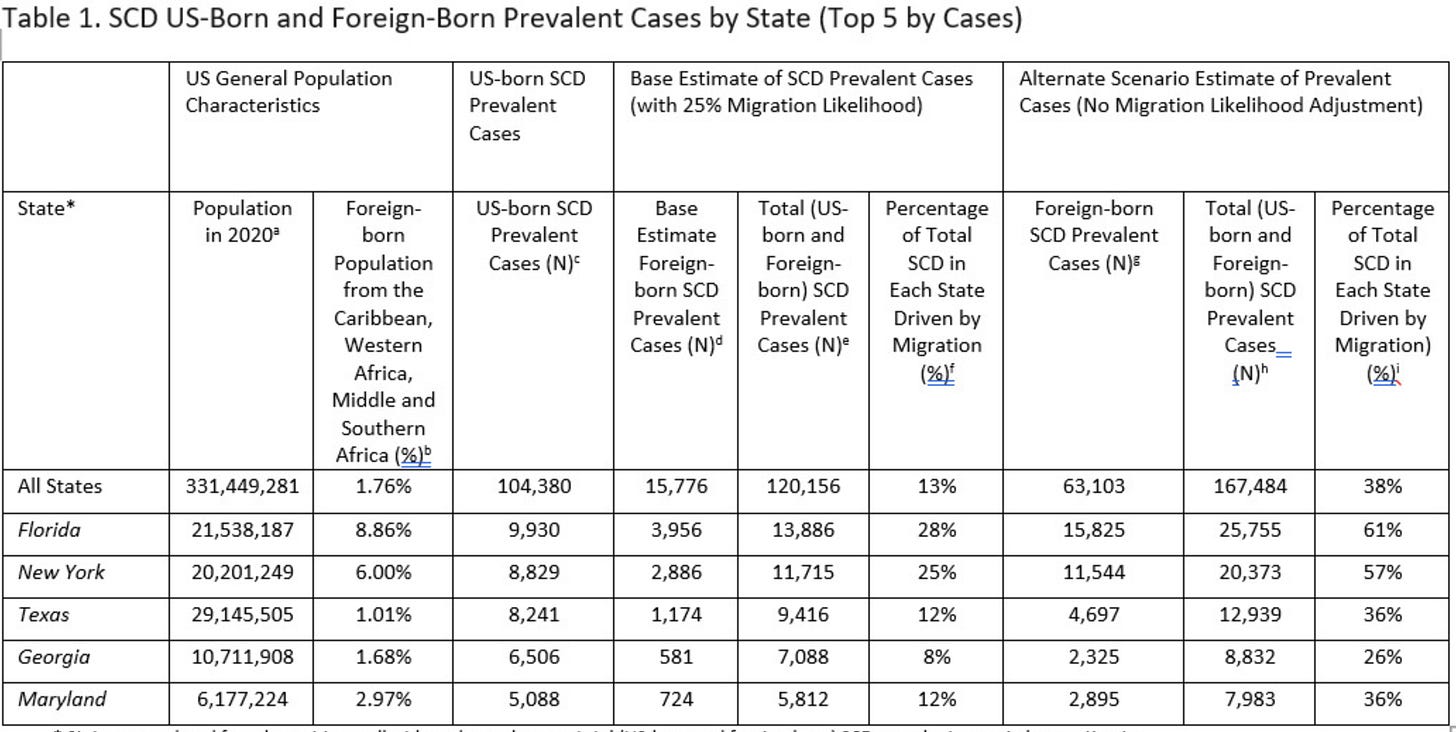How many people in the US have sickle cell disease?
Rigorous estimates are done about once every 20 years*
How many people in the US have sickle cell disease? The most widely used estimate is about 70,000-100,000 people, which comes from a 2010 study by Kathryn Hassell of the Colorado Sickle Cell Treatment and Research Center. The key findings from the study are:
National SCD population estimates ranged from 104,000 to 138,900, based on birth-cohort disease prevalence, but from 72,000 to 98,000 when corrected for early mortality. Several limitations were noted in the available data, particularly for SCD mortality in adults.
The calculation involves data from state newborn screening programs, US Census data, and adjust for early mortality (including age at death.)
This estimate is based on data up to about mid-2000s. However, the average age at death has shifted considerably over time due to declines in SCD child mortality and adults living longer:
(Figure from Hassell 2010)
While life expectancy for people with SCD is lower than the general population, if the age at death continued to increase over the past two decades (at least to some degree), this may contribute to an increase in population prevalence as well.
Recent estimates using similar approaches are not available. Nor is there a centralized health surveillance system or a patient registry, as is often done for other rare diseases (like cystic fibrosis.) However, a research team from several universities and government agencies, including the CDC, explored whether it may be possible to produce population estimates through data sources such as state Medicaid or hospital and emergency department discharge records. Using data from two states with integrated data systems (California and Georgia), the validation study by Reeves et al. (2024) found that:
In California, 7117 people met the surveillance case definition of SCD from 2016 through 2018;
48% of this group was captured by the Medicaid case definition [3,416 people]
41% by the discharge case definition [2,918 people]
In Georgia, 10 448 people met the surveillance case definition of SCD from 2016 through 2018;
45% of this group was captured by the Medicaid case definition [4,701 people]
51% by the discharge case definition [5,328 people]
We can use these findings to try and construct population estimates and make comparisons. For example, a NORC analysis of 2021 Medicaid enrollment found that 2,684 people in California and 3,407 in Georgia had SCD - which is notably lower than the Reeves study by about 20-25%. The reasons may be due to relying on fewer years of data, different enrollment criteria, and other differences in case definitions. Still, if we make several assumptions:
(a) The Medicaid SCD population represents about half of all SCD population in the US, and (b) this is similar across states (admittedly, a big ‘if’ assumption)
NORC Medicaid SCD findings underestimate the true Medicaid SCD population by about 20%,
we can try to make estimates for the US and other states. However, these estimates are intended to be a rough approximation or starting point: they are not a substitute for public health surveillance and the use of more rigorous methods.
Data notes and limitations:
State eligibility requirements and churn or length of Medicaid enrollment may contribute to variability across states. This is not reflected in the assumptions stated above.
The year 2021 may be unique due to pandemic-related federal policies impacting Medicaid enrollment.
Other decisions in case definitions, such as the number of ICD-10 diagnostic codes for SCD within a given time period or the length of the observation period, may also impact estimates.
*To learn more about the reasons behind the gaps in data about SCD, please visit the About page.
Update: this 2023 study published in Blood by Fu, Andemariam, and Herman used a different methodological approach but arrived at similar estimates for the US (120,154) and New York (11,715). However, their estimates are higher for states like Florida and Texas, and lower than was has been reported for Georgia:


